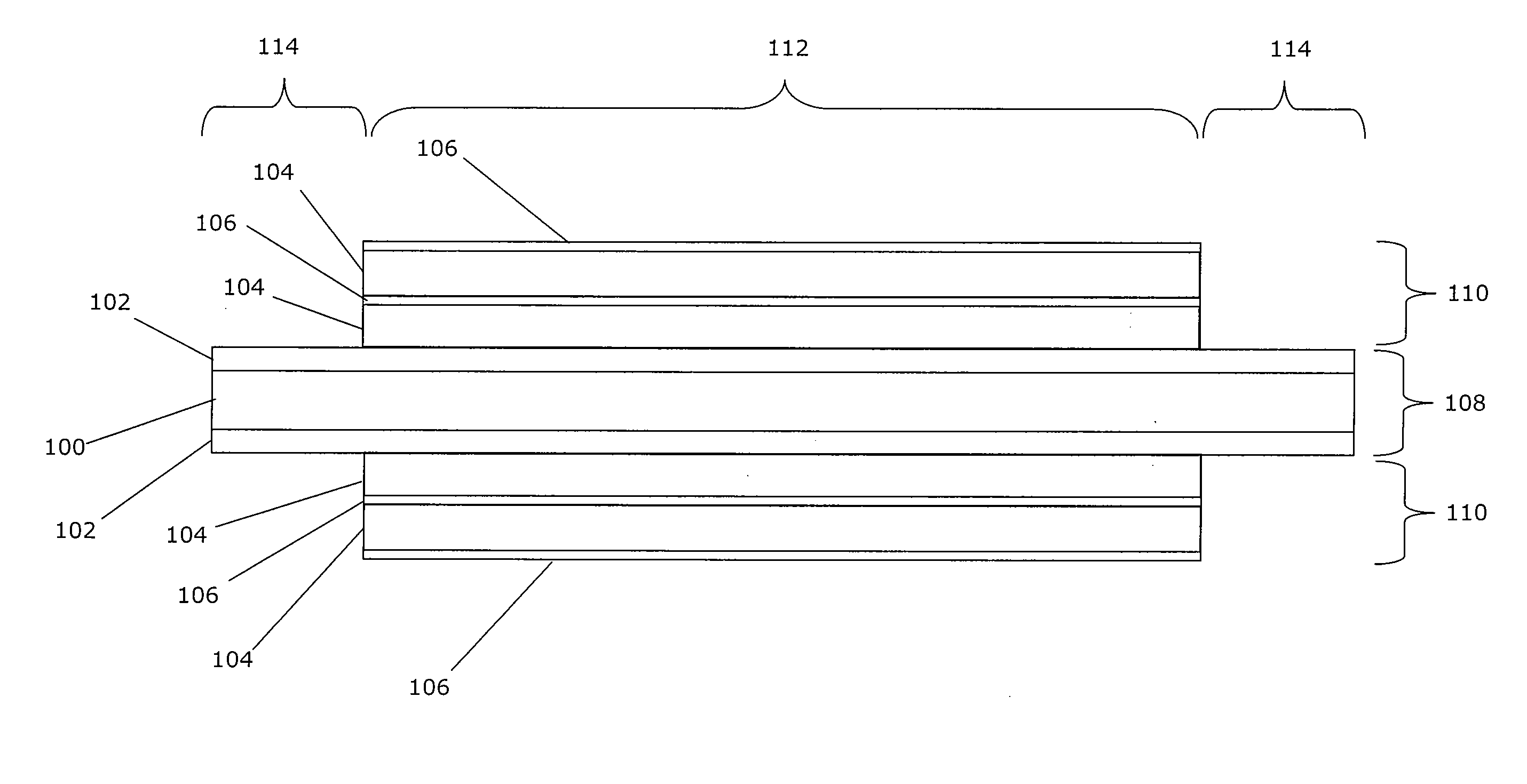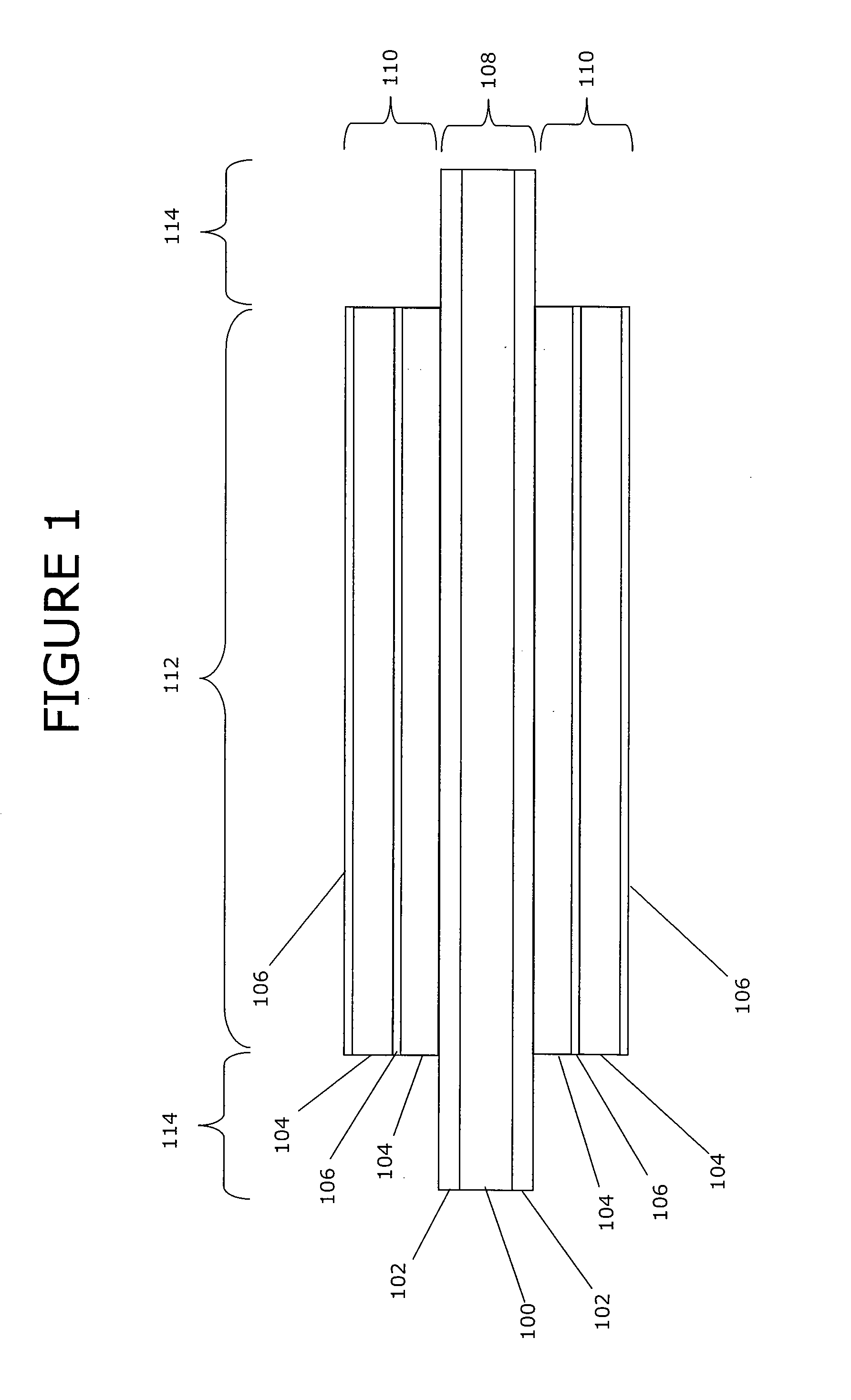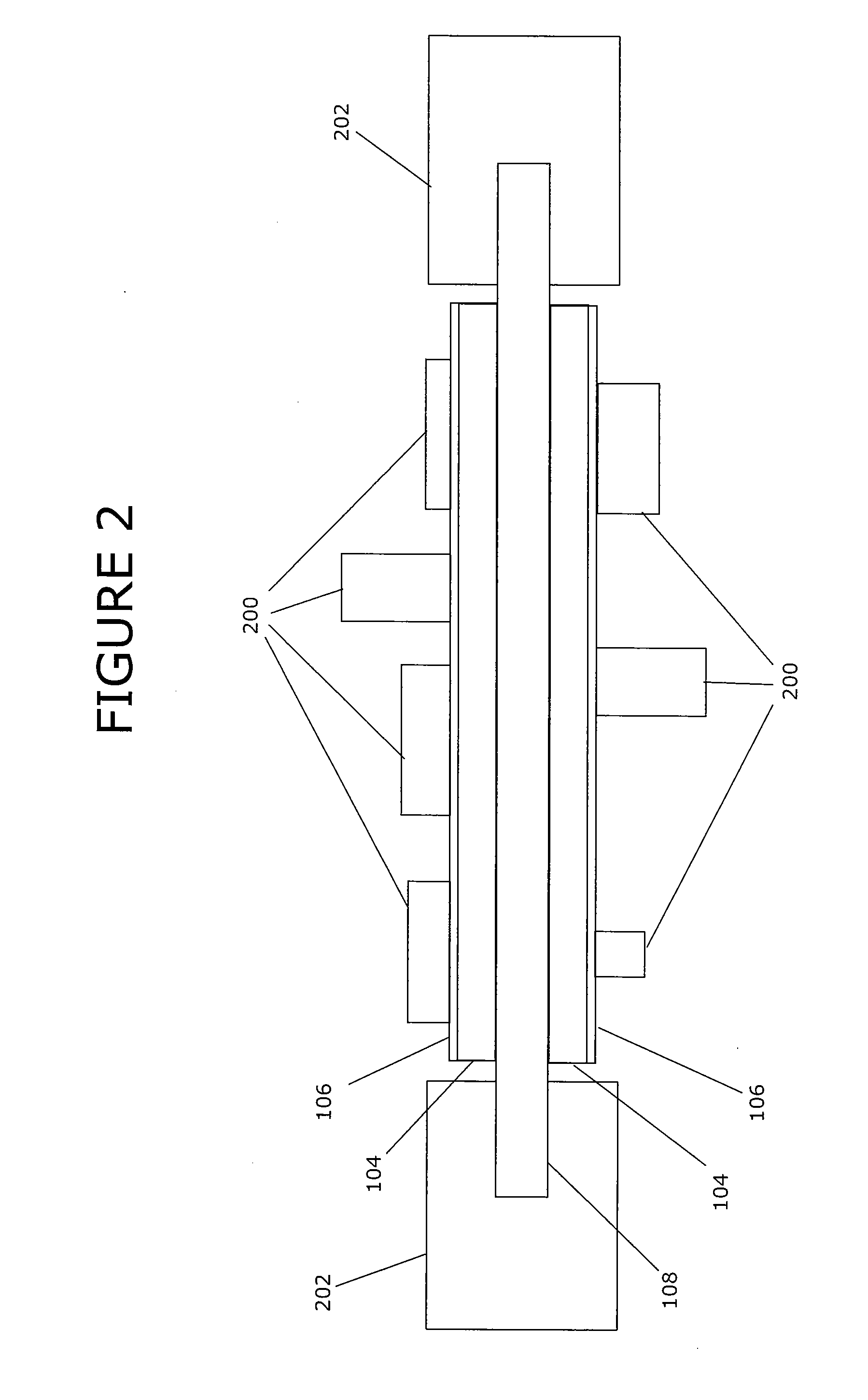Multilayer, thermally-stabilized substrate structures
a substrate structure and multi-layer technology, applied in the direction of printed circuit manufacturing, printed circuit construction, electrical apparatus construction details, etc., can solve the problems of ensuring thermal stability within the integrated chip, affecting the design of such sips, and increasing the difficulty of maintaining thermal stability
- Summary
- Abstract
- Description
- Claims
- Application Information
AI Technical Summary
Benefits of technology
Problems solved by technology
Method used
Image
Examples
Embodiment Construction
[0014]Exemplary embodiments of the present invention include the use of multilayer substrate structures to improve the thermal stability of systems in a package (SIPs). These exemplary multilayer substrate structures include a core structure that is thermally-conductive and multilayer circuit boards disposed symmetrically above and below the core structure. The core structure and the multilayer circuit boards are configured such that the thermal expansion coefficient in the horizontal plane of the core structure is less than or equal to the thermal expansion coefficient of a respective horizontal plane of the electrically-conductive layers of the multilayer circuit boards.
[0015]The high thermal conductivity of the core structure provides an effective route for heat dissipation during operation, thereby helping to reduce temperature elevation. The formation of the core structure with a relatively low horizontal thermal expansion coefficient helps prevent the insulating layers from ex...
PUM
 Login to View More
Login to View More Abstract
Description
Claims
Application Information
 Login to View More
Login to View More - R&D
- Intellectual Property
- Life Sciences
- Materials
- Tech Scout
- Unparalleled Data Quality
- Higher Quality Content
- 60% Fewer Hallucinations
Browse by: Latest US Patents, China's latest patents, Technical Efficacy Thesaurus, Application Domain, Technology Topic, Popular Technical Reports.
© 2025 PatSnap. All rights reserved.Legal|Privacy policy|Modern Slavery Act Transparency Statement|Sitemap|About US| Contact US: help@patsnap.com



